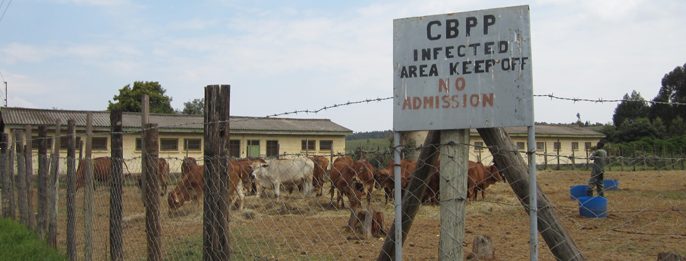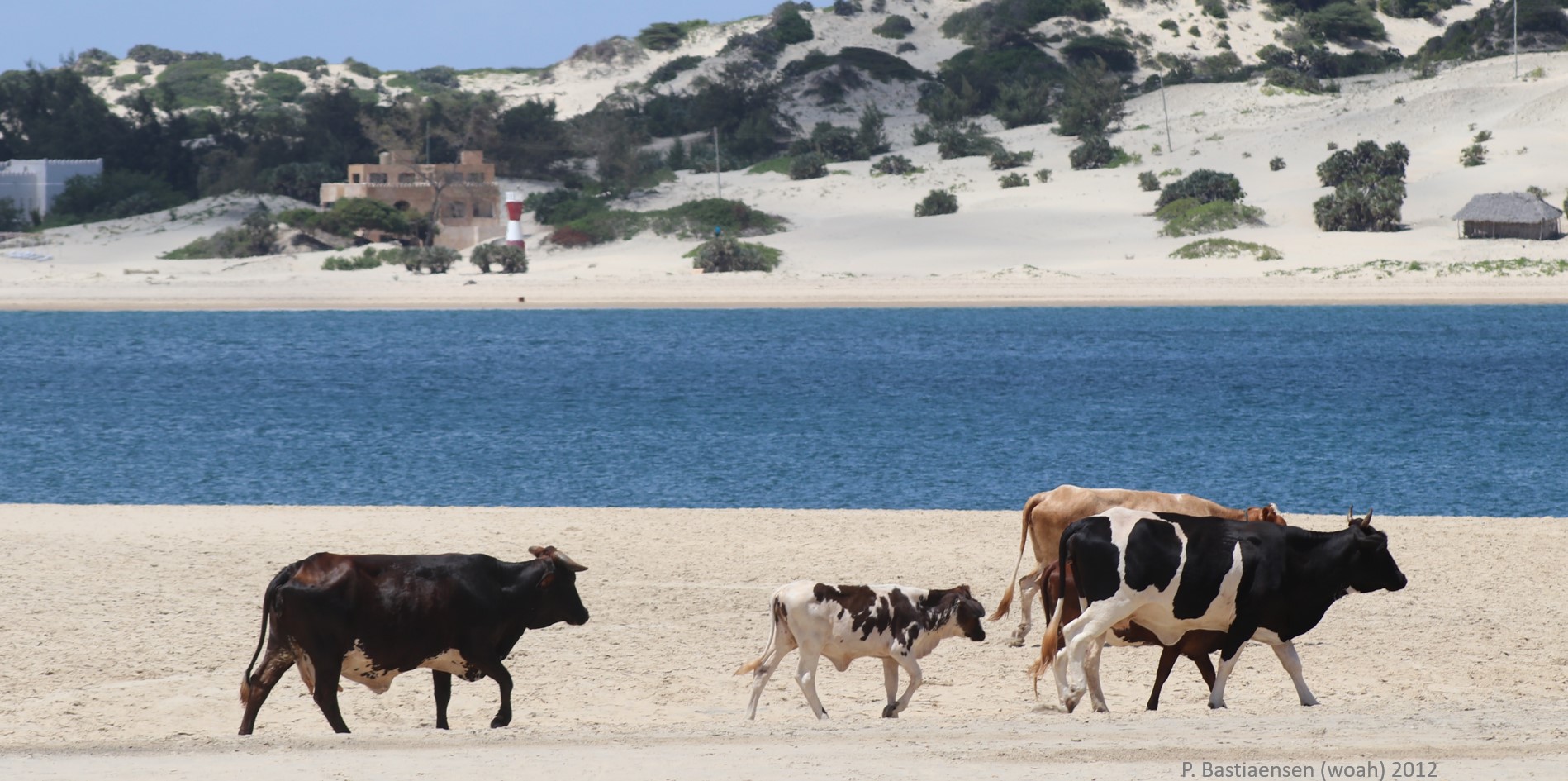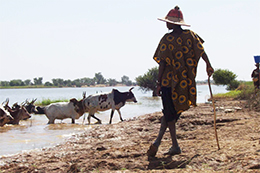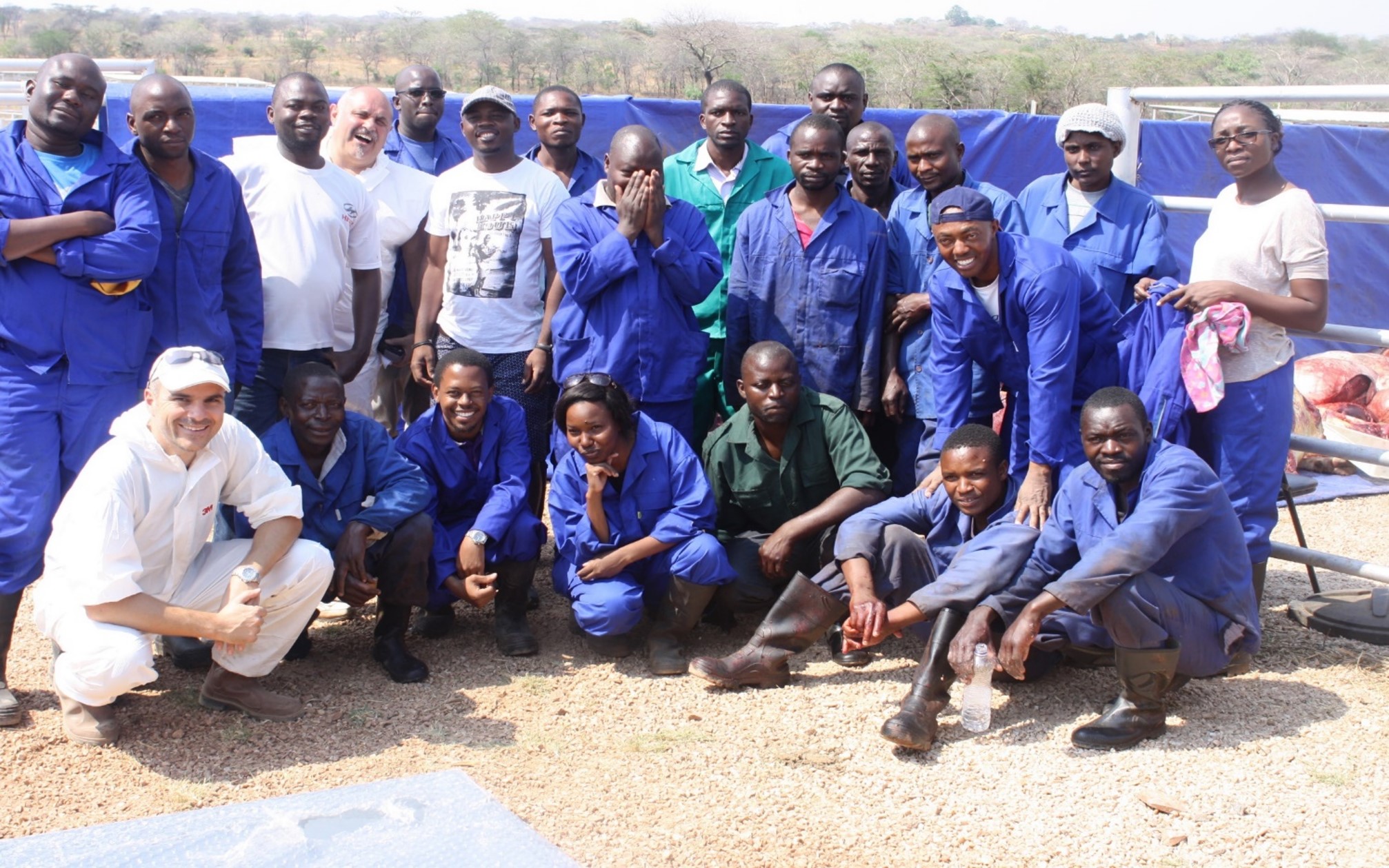
Pastoralist with cattle - Mali Picture (c) N. Denormandie (pace) 2004
Pastoralist with cattle – Mali. Picture (c) N. Denormandie (pace) 2004
This inaugural meeting was organised as a result of the adoption in June 2022 of the terms of reference for the Africa-region Standing Group of Experts (SGE) for Contagious bovine pleuropneumonia (CBPP) by the 11th Regional Steering Committee (RSC-11) of the GF-TADs for Africa. The SGE-CBPP for Africa aims to promote regular exchange of information and best practices among concerned national veterinary authorities, international, regional and national experts, and the private sector. The disease was identified as one of the 5 priority diseases under the GF-TADs Regional Strategy 2021 – 2025, adopted in October 2021.
As per the terms of reference, the SGE-CBPP for Africa would start with a core group of 4 founding Members Countries drawn from Central (Chad), Eastern (Somalia), Southern (Zambia) and Western Africa (Nigeria), with the aim to progressively extend to more countries.
The launch meeting was attended by all 4 founding member countries (mentioned above) that have extensive experience in controlling CBPP and responded to a public call for expression of interest (December 2021 – January 2022) to join the SGE as Member country. The call also invited expressions of interest from institutions and individuals.
Also present at the launch were the African Union Interafrican Bureau for Animal Resources, the Regional Animal Health Centre for the Economic Community of West African States (RAHC for ECOWAS), the Secretariat of the Common Market for Eastern and Southern Africa (COMESA), FAO and WOAH Regional Representations, WOAH and FAO Reference Laboratories as well as selected national / regional laboratories : Pan African Veterinary Vaccine Centre of the African Union (AU—PANVAC); the National Veterinary Research Institute (NVRI), Vom, Nigeria; the Animal Health Institute (AHI), Sebeta – Ethiopia; the Botswana National Veterinary Laboratory (BNVL) Sebele, Gaborone – Botswana; and the Laboratoire Central Vétérinaire (LCV) Sotuba, Bamako – Mali.
Overall the meeting was attended by a cumulative total of 45 participants over the 6 daily meetings (up to 33 participants per day) between 6 – 15 June 2023. Forty per-cent (40%) of participants was French-speaking, while 23% were women.
Training on: Recognition of CBPP lesions. Central Veterinary Research Institute Lusaka, Zambia, 20-25 September 2015. Organised by CVRI and WOAH RL Teramo sponsored by GALVmed, involving Namibia, Angola, Botswana, Zambia. Picture (c) IZS Teramo (2015)
Training on: Recognition of CBPP lesions. Central Veterinary Research Institute Lusaka, Zambia, 20-25 September 2015. Organised by CVRI and WOAH RL Teramo sponsored by GALVmed, involving Namibia, Angola, Botswana, Zambia. Picture (c) IZS Teramo (2015)
Based on the expected outcomes of this meeting and follow-up activities, being:
…the following agenda was prepared, fostering as much exchange of information and discussion between participants as possible (download the agenda below).
Resulting from the various presentations made during the 6 sessions, the last part of session 6 (on 15 June) was dedicated to the preparation of the following considerations, and the following technical items or topics identified, to guide the work of the SGE over the next 12 – 24 months, depending on the frequency of meetings —
Considering:
…the following technical items or topics were identified (in order of priority and logic/sequence of implementation) with comments (where appropriate) on possible secondary items or topics, some of which apply to several identified topics:
Topic |
Definition |
Scope |
1. Strategy |
Development and validation of strategic plans at various levels of governance (national, clusters of neighbouring countries, sub-regions, the continent and/or the international community, for higher prioritisation of the disease (technically and financially). |
|
2. Surveillance |
Enhanced surveillance leading to improved disease intelligence for better and more reliable reporting of the disease. |
|
3. Diagnosis |
Enhance networking between national reference laboratories, national reference laboratories offering regional services and international reference laboratories and in time, increase the number of WOAH/FAO Reference Laboratories in Africa. |
|
4. Vaccines |
Availability of good quality vaccines and vaccination approaches to increase vaccination coverage and efficacy. |
|
5. Policy |
Policy issues pertaining to the continuum between private good, public good and the development of PPPs, for improved supply and demand of inputs, enhanced (movement) control, cross-border cooperation and export-trade facilitation. |
|
6. Research |
Collaboration with research institutions and researchers to generate evidence on: |
|
it was clarified that :
Furthermore, a dedicated SGE page has been opened of the GF-TADs for Africa website in order to facilitate the sharing of information amongst members of the SGE (click the link) : Contagious Bovine Pleuropneumonia – Standing Group of Experts (SGE) – Africa




